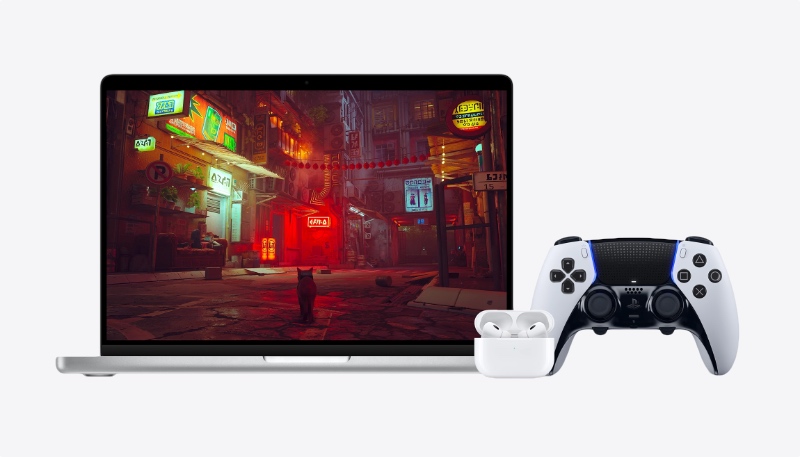Apple executives have offered an inside look at how the company is working to turn the Mac into a powerful gaming platform. The new interview, with Raymond Wong at Inverse, comes as Apple is putting an emphasis on gaming on its devices, including the iPhone and Mac.
Gordon Keppel, a Mac product marketing manager at Apple, told Wong how Apple Silicon has changed everything:
“Apple silicon has changed all that,” Keppel tells Inverse. “Now, every Mac that ships with Apple silicon can play AAA games pretty fantastically. Apple silicon has been transformative of our mainstream systems that got tremendous boosts in graphics with M1, M2, and now with M3.”
Meanwhile, Leland Martin, a software marketing manager at Apple, discussed how Apple Silicon has removed complicated layers from the development process for games on the Mac:
If you look at the Mac lineup just a few years ago, there was a mix of both integrated and discrete GPUs. That can add complexity when you’re developing games. Because you have multiple different hardware permutations to consider.
Today, we’ve effectively eliminated that completely with Apple silicon, creating a unified gaming platform now across iPhone, iPad, and Mac. Once a game is designed for one platform, it’s a straightforward process to bring it to the other two. We’re seeing this play out with games like Resident Evil Village that launched first [on Mac] followed by iPhone and iPad.
Apple this year unveiled its Game Porting Toolkit alongside macOS Sonoma, with the aim of making it significantly easier for developers to port games from other platforms to the Mac.
Martin also discussed how Apple has already seen a boost in interest from developers thanks to the release of the Game Porting Toolkit:
“We’ve definitely seen interest from developers and publishers like Kojima Productions (Death Stranding: Director’s Cut coming out in early 2024) and Annapurna Interactive Games (Stray) on how to take advantage of both parts of the Game Porting Toolkit,” Martin says. “When you download the toolkit, there’s really two parts to it. There’s that emulation environment and that’s helped demonstrate today’s game — you drop in an existing Windows game and see how well it could run on the Mac. The second part is the Metal shader converter and that’s there to help developers convert their tens of thousands of shader code into Metal. And they’ve praised how incredibly useful this is and how it’s saved them a bunch of time in their development timeline.”
To read the full Inverse interview, click here.


